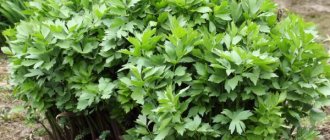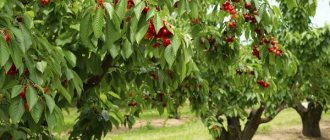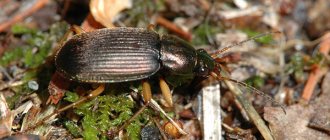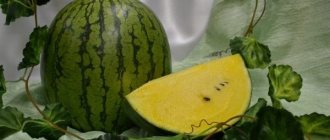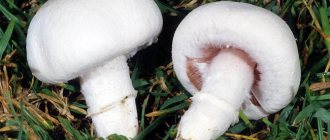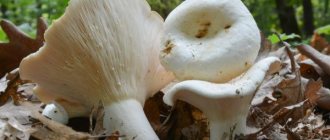Botanical description
The plant is cross-pollinated. The growth period is 50-55 days and is characterized by constant growth of foliage.
The shrub is erect, highly branched. Flowering is long-lasting (from July to October). The seeds have high germination capacity and are suitable for planting within 6-7 years after collection. Self-seeding is characteristic. Honey culture. In cooking it is used as a spicy food additive and also as a medicinal plant.
Other names:
- kondari;
- garden;
- garden;
- saturation;
- fragrant savory;
- annual savory;
- pepper grass;
- legume grass;
- chobr.
Latin name: Satureja hortensis. English name – Savory.
There is also mountain savory, which you can learn about here.
How to replace savory in recipes
If the recipe calls for savory and you couldn’t or didn’t have time to buy it, consider alternative options. You'll find at least one of these in your spice cabinet.
- Thyme. The two herbs resemble each other in their minty-sharp flavor and, when chopped finely, it is difficult to tell the difference between them. As a substitute, thyme can be used either fresh or dry. Take it in exactly the same volume.
- Sage is another herb that has a similar taste to savory. Its leaves provide the same sharp pine notes. Please note that fresh sage is recommended as a substitute. Take it in the same quantity as required for your dish. Chop the leaves finely so they look more like savory.
- An effective way to find a good savory substitute is to experiment with herb combinations. To more accurately replicate the flavor of this savory herb, use 2 parts fresh thyme to 1 part fresh sage and mint.
Appearance and photo
The shrub reaches a length of 70-75 centimeters. The root is erect, cylindrical in cross section, thin, up to 18-22 centimeters long. The stems are branched, have widely spaced branches, are covered on the outside with short purple fibers bent down, and reach a length of 30 centimeters.
The foliage is lanceolate-linear, dark green, the leaves are narrow, with sharp edges, reaching 1.5-2.5 centimeters in length. The flowers grow in the axils of the leaves , the upper ones are sessile, the lower ones are on short pedicels, they are located 3-5 pieces in one axil and form a loose elongated inflorescence.
The calyx is up to 4 centimeters long, hairy, regular. Corolla: lilac or pink with purple speckles. The fruit of the plant is an ovoid-triangular nut, dark brown or brown.
You can look at the photo to see what this plant looks like:
What does garden savory look like?
An annual subshrub up to 70 cm high, it grows in the Transcaucasus, Crimea and the Mediterranean. The herbaceous flowering plant belongs to the Lamiaceae family. The branched stem, brown with a purple tint, is covered with linear-lanceolate, sharp leaves. The savory root is cylindrical, about 15 cm in length, located near the surface.
The subshrub blooms with lilac or pinkish interspersed flowers, which are collected in loose elongated inflorescences. The hairy calyxes reach up to 4 mm in diameter.
The fruits of the bush look like small triangular nuts.
Savory annual or perennial
There are several dozen species of savory in nature. Some of them are perennial. Garden savory is grown as an annual crop.
How does garden savory propagate?
Unlike perennial types of pepper grass, the garden type is propagated by seeds. In regions with high summer temperatures and early spring, this aromatic herb can be grown by direct sowing into the ground. In central Russia, the Urals and Siberia, it is recommended to grow the plant in seedlings.
It is possible to propagate the subshrub by cuttings from a plant that has overwintered in a warm room.
History and geography of habitat
The homeland of savory is the countries of the East and the Mediterranean . The first records of the plant are in writings from Ancient Rome, where pepper grass was used to improve memory and attention. Initially, savory was common among members of the Italian nobility.
In the eighteenth century, the seeds of the plant first came to Europe, from where they quickly spread throughout all countries due to their high survival rate and rapid growth. Currently, the predominant growth of savory is noted in Southern Europe, Turkey, Crimea, and Central Asia.
a brief description of
A spice with a pungent, piquant taste and pleasant aroma is obtained from the leaves of the savory plant. Initially, the plant grew in the Mediterranean, and from there it spread further to Europe, where it quickly gained popularity among chefs.
How does it grow and when does it bloom?
The savory plant is an annual shrub. It looks like a small bush about 20 cm high with short leaves. Savory blooms in July-October with small (up to 10 mm) white, purple or blue flowers.
What does it look like?
When dried, the spice looks like small dried leaves. They are oblong in shape, slightly twisted and easy to break.
Taste
Savory tastes similar to black pepper, so it was previously used as a cheap substitute for pepper. It has a distinct bitterness that can overpower any other spice, so it is best to add savory to food in small quantities.
Differences from related cultures
- Savory has erect stems that form a subshrub, and thyme is a low-growing plant that spreads along the ground.
- Tendency to overgrow and constant growth of foliage.
- The high content of tannins and essential oils in savory distinguishes it from thyme and mint.
- The aroma of savory is rich, balsamic, that of thyme is light and sweetish, and that of mint is tonic.
- Unlike thyme, fresh savory can relieve itching after insect bites and reduce swelling.
- The root of savory is single, straight, while thyme has a highly branched root system.
- The inflorescences of savory are elongated, while those of thyme are spherical.
Use of savory
Garden savory is used in cooking, medicine and everyday life. Usage options:
- dried leaves and flowers are good for adding to food and tea in winter, and also appear in recipes for the treatment of many diseases;
- The greens are edible and help repel pests.
In cooking
Fresh seasoning is good in salads, berry drinks, dried - goes into first and second courses. When dried, the spice smells stronger than when fresh, because the water evaporates, but the aromatic oils remain.
Dishes where garden savory is added:
- from legumes, beans;
- sauces, gravies;
- soups;
- marinades;
- vegetable stews;
- savory baked goods.
The seasoning goes well with stewed or fried meat, especially game, fish, cooked in the oven or over coals.
Garden savory is combined with marjoram, bay leaf, garlic, black and red pepper. In dishes, seasoning can be replaced with oregano, oregano, rosemary, and basil.
Watch the video on how to use the spice:
At home
Previously, the leaves of the plant were used to fumigate cows after calving and newborn calves. It was believed that this warded off diseases.
Nowadays, garden savory juice is applied to the wrist, which protects against insects. Bushes are planted along beds with carrots, cabbage and other vegetable crops, this repels harmful insects.
In medicine
The medicinal properties of garden savory allow it to be used in alternative medicine in the following cases:
- stomatitis, gingivitis, cystitis – relieves inflammation, fights microbes;
- bronchitis – helps to cough, get rid of phlegm;
- insect bites – relieves itching;
- indigestion – eliminates it thanks to tannins;
- parasites - removes them.
Official medicine uses the culture in lotions and face creams, hair shampoos, tablets and cough syrups.
View this post on Instagram
Publication from ⚜️ANTIQUE SHOPPING ⚜️
